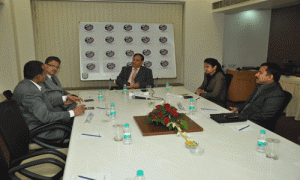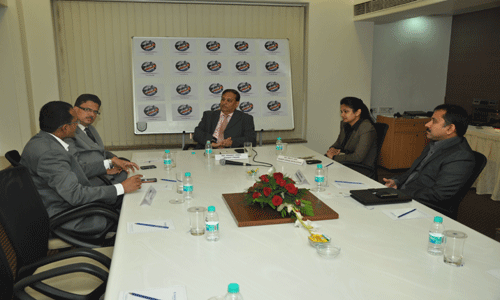Venue—Hotel Kohinoor Continental
Moderator—Pranay Vakil, Chairman, Knight Frank India
Panelists—Kruti Jain, Director, Kumar Urban Developers
Sunil Dahiya, MD, Vigneshwara Developers
Atul Modak, Head, Kohinoor City
Ravi Sinha, CEO & Managing Editor, Track2Realty
 Pranay Vakil: Kruti can you give some examples of innovative funding for the benefit of the panel? It is just to prove a point about how innovative that funding has been.
Pranay Vakil: Kruti can you give some examples of innovative funding for the benefit of the panel? It is just to prove a point about how innovative that funding has been.
Kruti Jain: If I were to look at other industry learning from us, I think the biggest example would be of how we have not only got a distribution channel worked out with the brokers, financiers, bankers but through our wealth management club. So what has recently happened is that we have started borrowing at 13% standard. Some people have managed to borrow at 10% in this model. For example, I borrowed from FMO, which is a Dutch Pension Fund and it has given me a very cheap funding. Only because I could comply with extremely stringent norms and it took me a team of 20 people to comply to their documentation approximately nine and a half months because as an industry we never followed those norms. They exist in some parts of the world, but not here.
Pranay Vakil: I think you are talking about ECD.
Kruti Jain: No, I will come to ECD. We have learned it from other industries. From us, what the other industries have learnt is the so called waterfall cash flow where you are saying that I will have an average rate where I start selling a product under my cost, I lease it to Pantaloon at Rs 18 per sq ft because they are my anchor tenant in my mall. And my other tenants are paying 200-250 per sq ft. And that is how I average out and yet make money. And that is the biggest learning other industries have taken from us.
Ravi Sinha: How far this model has worked across the sector, with a gap of 70-80% in the rentals between two floors?
Kruti Jain: Not just 70-80% my friend, it is a 250% gap and it has worked beautifully. Whatever malls you see, they are employing the same model.
Pranay Vakil: If you want McDonald’s in your mall, you might just throw it to them for free. It is going to act like a magnet. Everyone else will follow and it will get you the footfall you want in the mall. These are things tried out in places like Indonesia extensively. People have been very innovative with this. The anchor is very important word. It does not necessarily mean a large space consumer. McDonald’s may take 3000 sq ft but it is an anchor.
What most people hear and the mistakes that people have made is I must get the large player because they take large spaces and they act as their anchors. Now if you were to give a concession to such a large consumer, then you have a problem. But if you know the definition of an anchor, give a space of say 3000 sq ft out of 300,000 sq ft to that anchor, it won’t hurt you at all.
Atul Modak: We have been putting this methodology to use. You will be surprised, we have our entire mall to a brand for an entire year for free. We are saying that please come and start the mall, just give me the expenses. And it is working fine.
Pranay Vakil: What you are saying is right. I was in Shanghai recently and met with the commercial bodies, exactly what you said. One year, take this office completely free of charge, you don’t even pay the outgoings. But the contract will be for three years and it will be a contract which you cannot revoke for three years. So in the next two years, you can make up for those three years.
…..to be continued






3 Comments
Good discussion ……
Really, it is very interesting debate.
Such a gr8 debatable topic……..